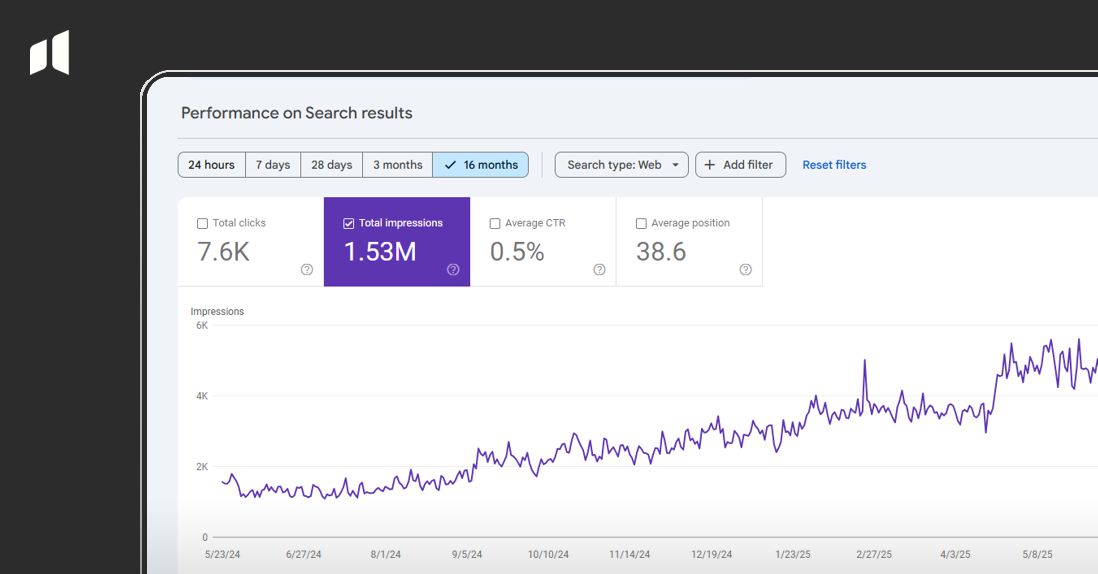On-Page SEO
On-page SEO in Surrey that helps your website rank higher and convert better. Pages are optimised so your content is easier to find by search engines and more persuasive for your customers. The result is a faster website that ranks higher and turns more visitors into enquiries.

Why On-Page SEO is essential for your website
On-page SEO improves how your website communicates with search engines and visitors. It focuses on the way your pages are built and how information is organised, making it easier for both Google and your customers to understand.
When this isn’t done well, websites slip down search results and traffic dries up. Headings miss the words people use to search, text is unclear, links are broken or pages load too slowly. Visitors leave within seconds, and Google stops trusting the site.
Fixing these elements strengthens your pages so Google can read them accurately and visitors can find what they need quickly.
How our on-page SEO improves your site’s results
We review your site from the ground up, looking at how pages are built and how information flows between them. Each element is refined so search engines can read your site clearly and visitors find what they’re looking for without friction. We refine content and headings so they match what people search for and make sure links take visitors easily from one page to another. This builds stronger relevance signals for Google and creates a smoother experience for every visitor.

On-Page SEO Services We Provide
We start by reviewing your website in full, looking at how each page is built and how information is arranged. Structure, titles, headings and internal links are refined so search engines can read your site clearly and visitors find what they need with ease.
Content is improved to match what people search for and to show clearly what your business offers. Each improvement strengthens how your site performs in search and supports a smoother path from visitor to enquiry.
What exactly is on-page SEO, and why does it matter?
On-page SEO is the process of improving each page on your website so search engines can understand what it’s about and show it to the right people. It covers how the page is written, how information is structured, how images and media are presented, and how fast and easy it is to use. When done properly, it helps search engines recognise your expertise and helps visitors find what they came for. Strong on-page SEO means your website works better for both people and search engines, leading to more visibility, more clicks, and better quality enquiries. Click here to find out more about on-page SEO.
How do you choose which keywords each page targets?
We start by learning how your customers search for your products or services. We use research tools to find the phrases they actually type into search engines, then group those keywords by topic and intent. Each page is matched to the terms that best fit its purpose, avoiding overlap so every page has a clear role. This approach strengthens your online presence, helps your site appear in more relevant searches, and builds steady organic traffic from people who are genuinely interested in what you offer.
How do you decide which pages to prioritise for on-page SEO?
We review your site to see which pages have the most potential to bring meaningful results. That includes pages that already attract visitors, key services that are not ranking yet, pages that show good engagement but low conversions, and new areas that support your wider goals. We look at traffic data, search intent, user behaviour, and your business objectives to decide where to focus first. This makes sure the work brings early gains while building a stronger base for the rest of your site over time.
Will optimising on-page elements alone bring traffic, or do I need more?
Optimising on-page elements is a strong foundation, but lasting results come from how those pages connect with the rest of your online presence. On-page work makes your site clearer to search engines, quicker to load for visitors, more engaging for readers, and stronger in overall structure. To build on that, we align it with wider activity such as regular content updates, ongoing SEO strategy, link building from trusted sources, and improvements to user experience. This creates a steady flow of organic traffic and helps your site perform well across both search engines and AI results.
How do you optimise images, multimedia, and page speed?
We optimise images and media so your pages load quickly without losing quality. Each file is resized, renamed, tagged correctly, and compressed to the right level so search engines can understand what it shows. We review how videos and other media are embedded to make sure they don’t slow your site down. We also fine-tune the technical setup through caching, hosting, database performance, and code structure to keep everything running fast and smooth for every visitor.
How do you structure internal links so Google understands my content?
Internal links help search engines understand how your pages relate to each other and which ones are most important. We map out your site to plan where those links should go, making sure visitors can move easily between key topics. Each link is written naturally within the content, using wording that makes sense to both users and search engines. We also review older pages to refresh outdated links and make sure authority flows across your site in a clear and balanced way.
Do you optimise for mobile (phones, tablets)?
Yes. Every site we design or update is built to work seamlessly on mobiles and tablets. We check how pages display, how fast they load, how buttons and menus respond to touch, and how content reads on smaller screens. We also test forms and calls-to-action to make sure visitors can get in touch easily from any device. This improves usability for your customers and strengthens how search engines rank your site.
How do you make sure the optimisations actually help users, not just search engines?
We start by understanding what visitors want to do on your site and how easily they can do it. Every optimisation we make, from layout and wording to navigation and page speed, is tested against that goal. We review behaviour data to see where people drop off, which sections they interact with, how far they scroll, and how long they stay. We then refine the design and content to guide them smoothly to the information or action they need. This balance between clarity, speed, relevance, and ease of use helps both users and search engines recognise your site’s value.
How will I know whether your on-page work has improved rankings or clicks?
We track performance using clear data that shows how your pages are improving. You’ll see changes in keyword positions, growth in organic traffic, shifts in user activity such as how people browse, and increases in the actions they take on your site. We review this data with you and explain what’s driving the results in plain language, so you always know what’s working. Over time, this builds a clear picture of progress and how your site is performing in real searches.
How much does on-page SEO cost, and what exactly is included?
The cost of on-page SEO depends on the number of pages we work on, the current condition of your website, how competitive your market is, and how much content refinement is needed. Every project starts with a review to identify what will make the biggest difference, so your budget is focused where it has real impact. Our work usually includes technical updates, content optimisation, metadata and schema improvements, and internal linking adjustments. You’ll know exactly what’s covered before we start, with clear reporting on what’s been done and what it’s achieved.






